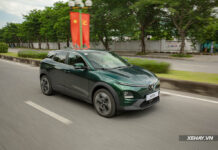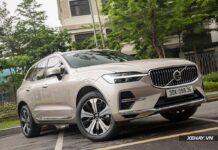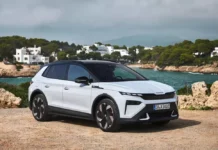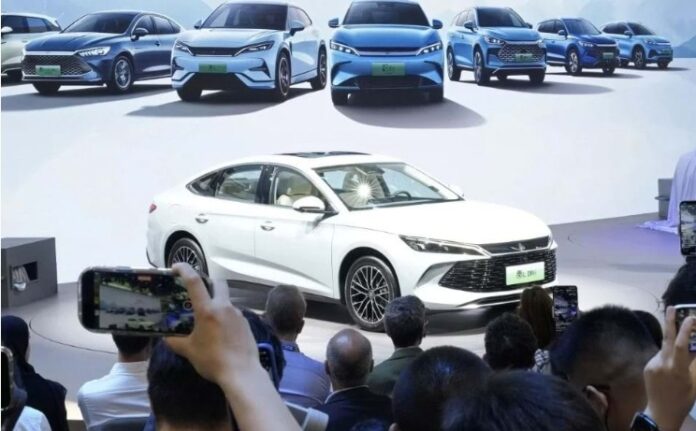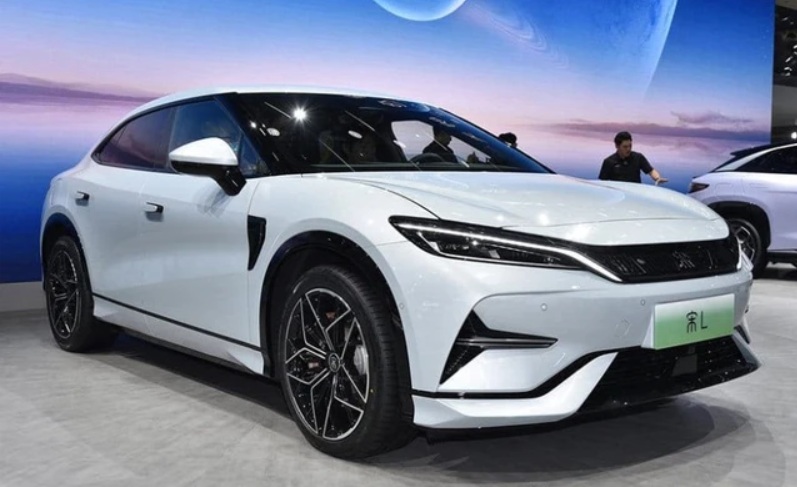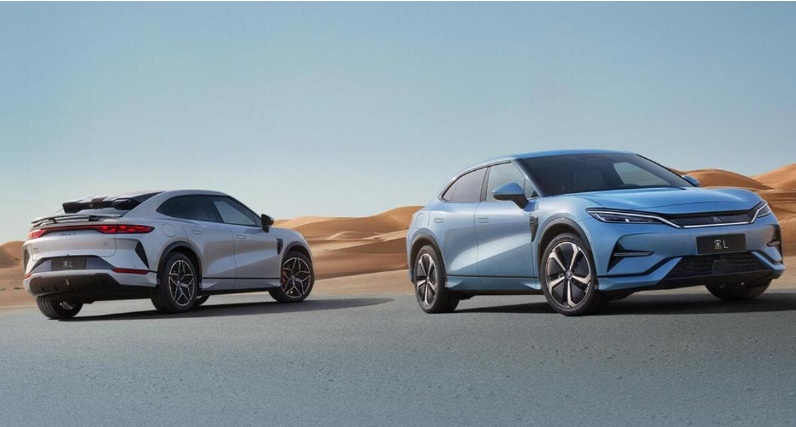After years of robust growth and global market dominance, Chinese electric vehicles are facing a new turning point.
Figures from Chinese Customs at the end of February 2025 revealed a significant 18% year-on-year decline in electric vehicle exports, totaling 92,625 units. This indicates a loss of momentum for the “made in China” EV storm.
This downturn is attributed to a combination of factors. Firstly, major markets, particularly Europe, are tightening trade barriers to protect their domestic industries. Consequently, Chinese EV prices have risen, eroding their once-strong competitive advantage.
In parallel, numerous countries are reducing or discontinuing incentives for EVs, causing a noticeable slowdown in sales. Consumers are now leaning towards hybrid or PHEV vehicles, perceived as more flexible due to their longer range and reduced reliance on charging infrastructure.
While the overall decrease is notable at 18%, some markets have witnessed much steeper drops. EV exports to South Korea plummeted by 51% to 3,151 units, and Spain recorded a similar decline of 49%, leaving only 2,664 vehicles exported. Belgium, despite a smaller percentage decrease, still saw a worrying drop, with exports totaling only 10,105 vehicles.
In the Middle East, the UAE couldn’t escape the downward trend, with a 20% reduction in imports from China, amounting to 3,231 vehicles. Conversely, the UK and Philippines markets displayed milder decreases of 2.9% and 0.9%, respectively, indicating relatively stable consumption compared to other regions.
On the other hand, emerging markets have shown surprising growth. Indonesia’s imports from China rose by 79%, Turkey by 131%, and Mexico by a staggering 623%, although the total volume of 7,847 units remains lower than traditional markets like Belgium and the UK.
Regionally, Asia remains the primary export market, accounting for roughly half of China’s EV exports and experiencing only a slight decline of 2.7%. Europe, once consuming nearly a third of China’s EV exports, saw a steep 30% drop in February, double that of January. Africa was the sole region to record growth, albeit with a negligible market share.
While the current slowdown doesn’t signify a crisis for Chinese electric vehicles, the global market has undoubtedly become more challenging. Amidst rising protectionism, shifting consumer behaviors, and intensifying competition, Chinese manufacturers must reevaluate their strategies to stay competitive in the global EV race.
TH (Tuoitrethudo)











